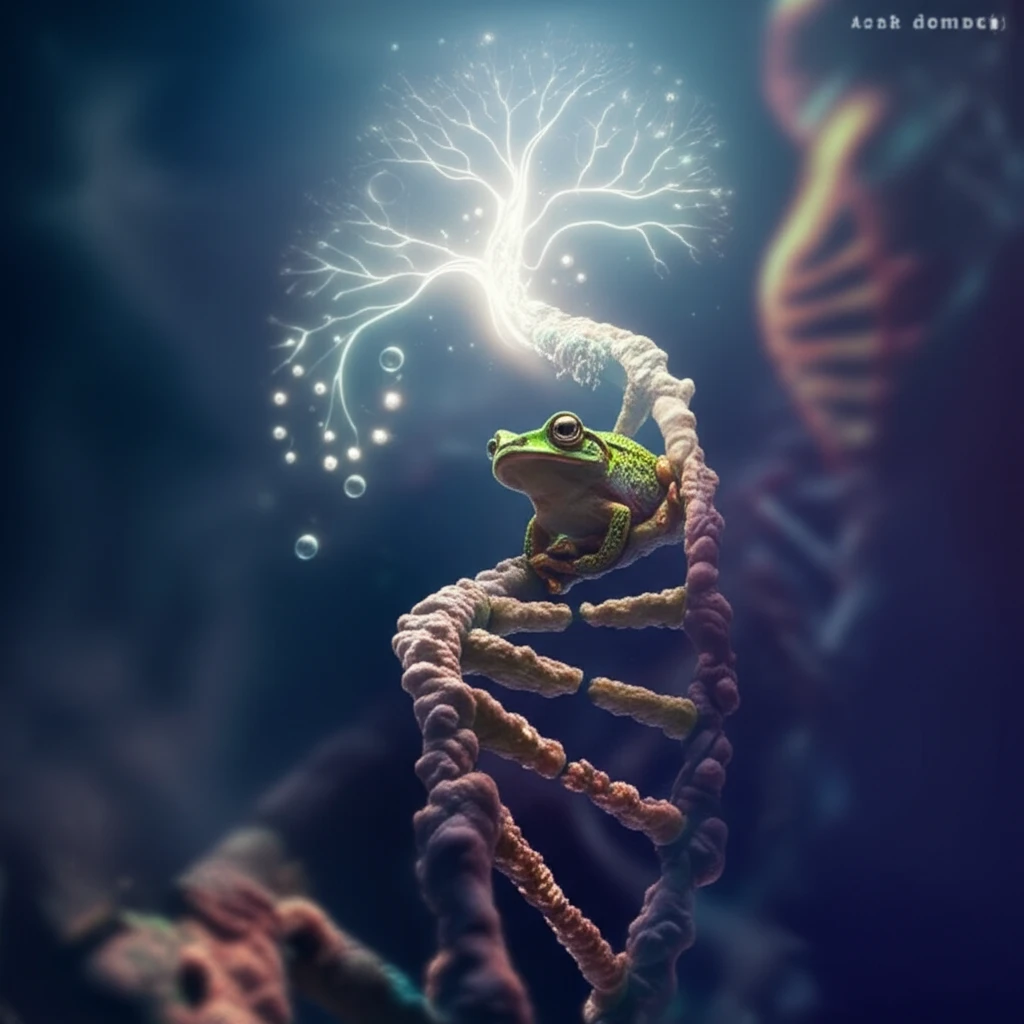
Froggy DNA Secrets: What a Tiny Frog's Genes Tell Us About Evolution
"Scientists unlock the genetic code of the Fejervarya multistriata (that's a paddy frog!) and uncover clues about frog family trees and how species evolve."
The paddy frog, scientifically known as Fejervarya multistriata, is a common amphibian found across Southeast Asia, including southern China. These frogs belong to the Dicroglossidae family, but their exact place in the frog family tree has been debated. What was once considered a single species, Fejervarya limnocharis, is now recognized as a complex of closely related species, adding to the confusion.
Understanding how different frog species are related is a big puzzle for scientists. The Ranidae family, a large group containing a quarter of all frog species, has been revised multiple times. Researchers use various methods, from comparing physical features to analyzing DNA, to sort out these relationships.
This article delves into new research that uses the mitochondrial DNA (mtDNA) of the paddy frog to shed light on its evolutionary history. MtDNA is a useful tool for tracing relationships between species. By analyzing the complete mtDNA sequence of Fejervarya multistriata, scientists hope to clarify its position within the frog world and understand how its genes have changed over time.
Decoding the Paddy Frog's Genetic Blueprint

Researchers in China extracted DNA from Fejervarya multistriata muscle tissue to analyze its mitogenome. They used a combination of long-range and normal polymerase chain reaction (PCR) techniques to amplify and sequence the entire mtDNA, piecing together the genetic code.
- Unique Gene Arrangement: The Fejervarya multistriata mitogenome has a unique arrangement of tRNA genes, similar to that found in other Fejervarya species. Specifically, a translocation of the tRNA-Leu gene was observed.
- Extra tRNA Copy: The mtDNA contains an extra copy of tRNA-Met, a feature shared with closely related species.
- Phylogenetic Placement: Phylogenetic analyses, which create “family trees” based on genetic data, placed Fejervarya multistriata within the Dicroglossidae family, closely related to other Fejervarya species. Interestingly, the analysis also suggested that Hylarana guentheri should be reclassified into the genus Babina.
What Does This Mean for Frog Classification?
This study provides valuable insights into the evolutionary relationships of frogs in the Dicroglossidae family. The unique gene arrangement and phylogenetic placement of Fejervarya multistriata help clarify its position relative to other species.
One intriguing finding is the suggestion that Fejervarya limnocharis and Fejervarya multistriata may actually be the same species. While the genetic data supports this idea due to a low genetic distance between the species, the authors suggest that further research with more samples and genetic markers is needed to confirm this.
Ultimately, understanding the mitogenome of Fejervarya multistriata contributes to a broader understanding of frog evolution and the complex history of amphibian life. By combining genetic data with traditional methods of classification, scientists can continue to refine our understanding of the natural world.
